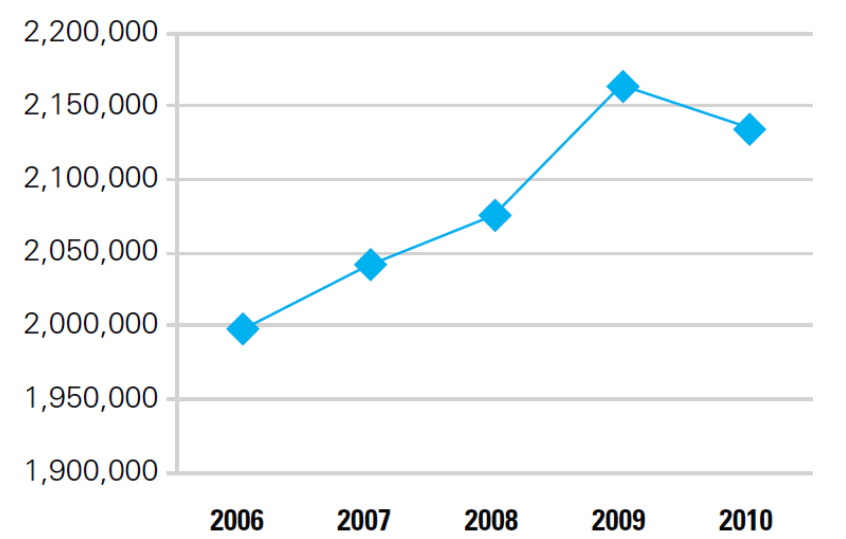- BLOG HOME
- »
- Signature Reports
- »
- How Will the Next Recession Impact U.S. College Enrollment, Persistence and Completions?

How Will the Next Recession Impact U.S. College Enrollment, Persistence and Completions?
Higher Ed Lessons Learned During the Great Recession Provide Some Insight
As the nation addresses the economic turmoil caused by the coronavirus, National Student Clearinghouse Research Center data may help clarify how postsecondary pathways transpire during a recession and shed light for institutional and public policy makers to craft effective responses to respond to today’s uncertain times.
The findings presented in “National Postsecondary Enrollment Trends: Before, During, and After the Great Recession,” showcased patterns among traditional-age, first-time students enrolling in colleges and universities for fall 2006 through 2010. The report includes detailed trend summaries and related tables; color charts broken down by regions, institution types, years, and other important variables; and insights.
Furthermore, Completing College: A National View of Student Attainment Rates – Fall 2008 Cohort reveals that while a larger number of students enrolled during the peak of the recession, completion rates declined. The largest decrease in completions was among nontraditional age students.
“During the Great Recession, our data showed that the impact on postsecondary institutions is not immediate; community colleges and for-profits saw the greatest increases in enrollment, mostly among older students who showed up later in the recession,” said Doug Shapiro, Executive Director of the National Student Clearinghouse Research Center. “However, the coronavirus impact will likely be different, especially among out of state and international enrollments as many students will want to stay closer to home, and students that continue with on-line education options. State budgets will undoubtedly be hit hard again, even as some states were just now getting their higher education funding back up to pre-recession levels.”
A few findings from the “National Postsecondary Enrollment Trends: Before, During, and After the Great Recession,” include:
- Community colleges experienced dramatic increases in enrollment after a delay of one to two years.
- The proportion of students enrolling full time in public two-year institutions increased slightly and four-year institutions saw virtually no change.
- The four-year private sector maintained its market share more effectively than was predicted.
Some lessons learned from the “Completing College: A National View of Student Attainment Rates – Fall 2008 Cohort” include:
- Some student populations experienced larger declines in their attainment rates, while others remained the same or actually increased.
- Nontraditional age students saw the largest decline. The completion rate fell 2.6 percentage points for those who entered college at age 21 through 24, and 1.4 percentage points for adult learners over 24.
- Traditional-age students experienced a 0.5 percent decline, attributable mostly to a small shift away from full-time enrollment.
Read the press release to discover other lessons learned during the Great Recession.
Total Enrollment by Cohort

Figure A from the “National Postsecondary Enrollment Trends: Before, During, and After the Great Recession” report
“…the coronavirus impact will likely be different, especially among out of state and international enrollments as many students will want to stay closer to home, and students that continue with on-line education options. State budgets will undoubtedly be hit hard again, even as some states were just now getting their higher education funding back up to pre-recession levels.”
Doug Shapiro
Executive director, National Student Clearinghouse Research Center



